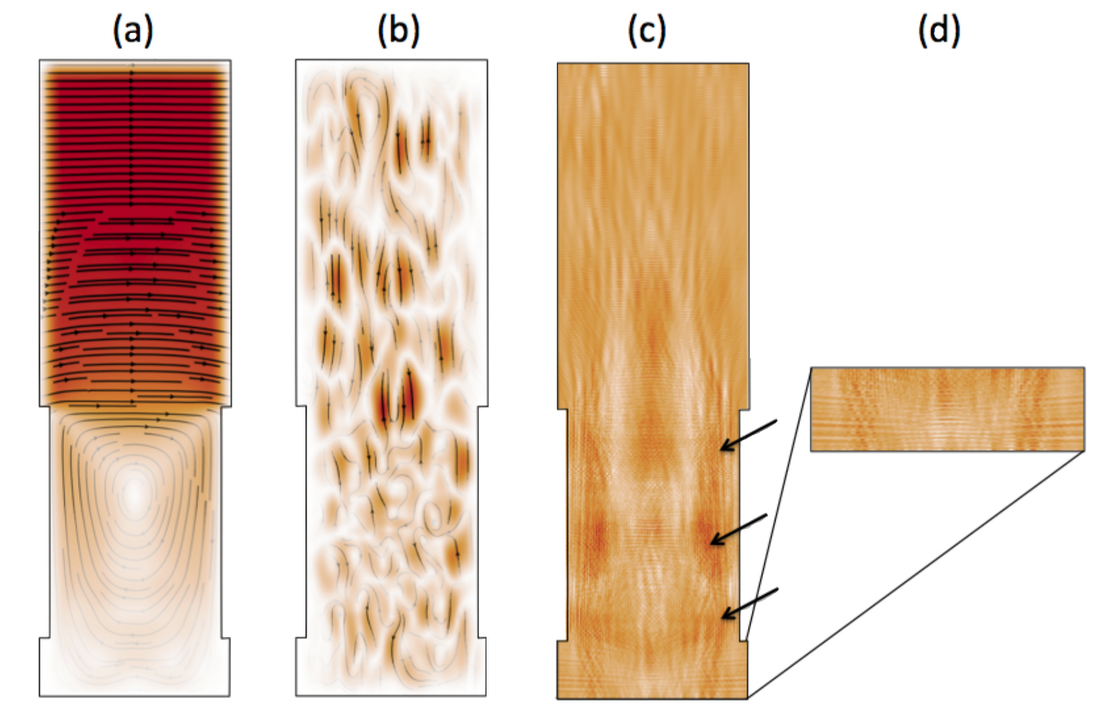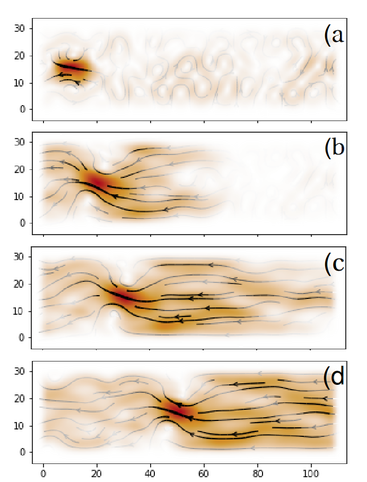
All-Electric Spin Hall Transistors:
Current and Spin Density Profiles. (a) Charge current, (b) spin current and (c) spin density s z maps computed on the H-bar. (d) The zoom
represents the spin density profile in the detection part, displaying quantum oscillations, while the black arrows point towards spin density maxima arising from the spin precession around the Rashba field. Here, α = 10 –11 eV·m in the leads (=0.026t) and α = 1.25×10 –11 eV·m in the gated region of the Hall bar (= 0.0325t). The gated region length is 0.8 μm.

Cooperative Charge Pumping and Enhanced Skyrmion Mobility
The electronic pumping arising from the steady motion of ferromagnetic skyrmions is investigated by solving the time evolution of the Schrodinger equation implemented on a tight-binding model with the statistical physics of the many-body problem. It is shown that the ability of steadily moving skyrmions to pump large charge currents arises from their non-trivial magnetic topology, i.e. the coexistence between spin-motive force and topological Hall effect. Based on an adiabatic scattering theory, we compute the pumped current and demonstrate that it scales with the reflection coefficient of the conduction electrons against the skyrmion. Finally, we propose that such a phenomenon can be exploited in the context of racetrack devices, where the electronic pumping enhances the collective motion of the train of skyrmions.
The electronic pumping arising from the steady motion of ferromagnetic skyrmions is investigated by solving the time evolution of the Schrodinger equation implemented on a tight-binding model with the statistical physics of the many-body problem. It is shown that the ability of steadily moving skyrmions to pump large charge currents arises from their non-trivial magnetic topology, i.e. the coexistence between spin-motive force and topological Hall effect. Based on an adiabatic scattering theory, we compute the pumped current and demonstrate that it scales with the reflection coefficient of the conduction electrons against the skyrmion. Finally, we propose that such a phenomenon can be exploited in the context of racetrack devices, where the electronic pumping enhances the collective motion of the train of skyrmions.
